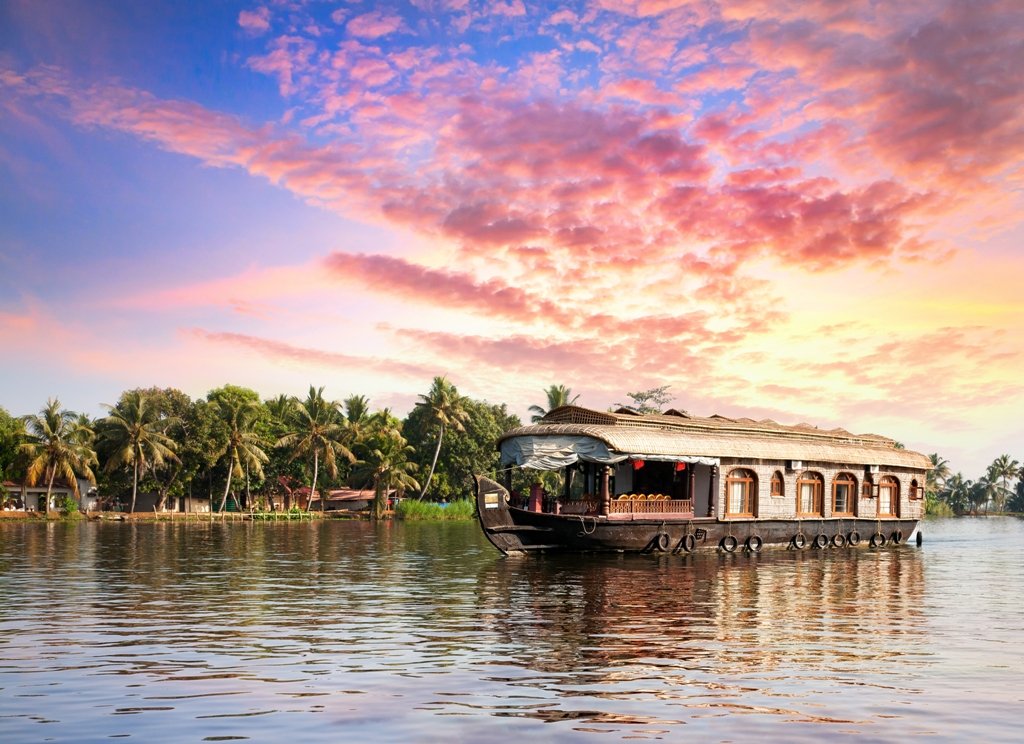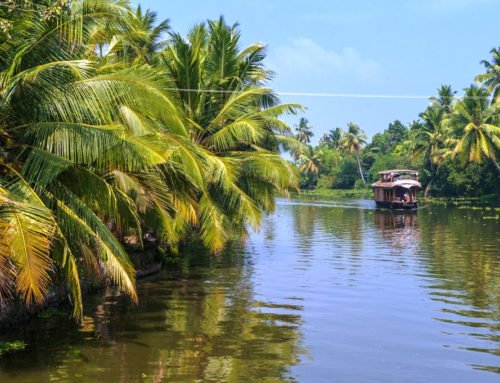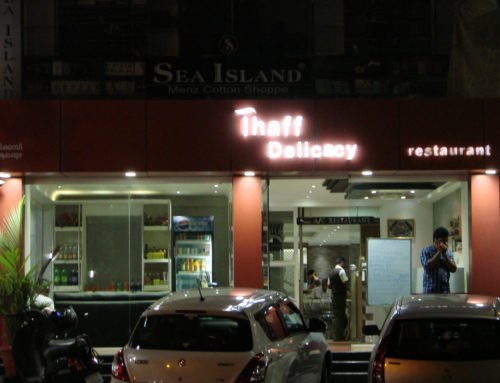Overview
- Features: Cruise along the Kerala backwaters in a luxurious houseboat
- Opening Times: Starts around 11am, daily
- Best Time to Visit: Late October to early March
- Duration: 1 day, 1 night
- Travelled By: Houseboat
- Cost: Rs 12,000 onwards
- Address: Alleppey, Kerala, India
- Type: Activity, Natural wonder
Author Reviews[display_rating_item_results rating_form_id=”2″ rating_entry_ids=”1″ show_category_filter=”false” show_options=”true” result_type=”star_rating” preserve_max_rating=”true” show_title=”false” show_count=”false” ]
Total Rating: [display_rating_result rating_form_id=”2″ show_count=”false” show_rich_snippets=true] [accordions load=”1″] [accordion title=”User Reviews” last] [display_rating_item_results rating_form_id=”5″ show_options=”true” result_type=”star_rating” preserve_max_rating=”true” show_title=”false” show_count=”true” show_rich_snippets=true] [/accordion] [accordion title=”Add Review”][display_rating_form show_email_input=”true” show_comment_textarea=”true” show_name_input=”true” rating_form_id=”5″] [/accordion] [/accordions]
Summary
The undisputed main attraction of a trip to Kerala, in South India, is travelling through the 900 km network of waterways in an Alleppey houseboat. The houseboat experience allows you to aimlessly drift past villages, temples, and churches and be thoroughly exposed to the rural lifestyle of the backwaters. Although the facilities might strike some as rather basic, you’ll be spoiled rotten by your private team—minimum of two, a cook and pilot—who work hard to make your experience unique and exceptional.
Alleppey Houseboat
The undisputed main attraction of a trip to Kerala, in South India, is travelling through the 900km network of waterways in an Alleppey houseboat. Long before the advent of roads, these waters were the slippery highways of Kerala, and many villagers still use paddle power as their main form of transport.
Reset your watch to a rhythm of life that has gone unchanged for centuries by boarding a kettuvallam, the long, beautifully crafted cargo boats that ply the waterways with cargo (if you don’t mind being referred to as such!). An engineering feat, a kettuvallam is made from lengths of ironwood, anjili, or jackwood, and not a single nail is used in the construction— it’s joined with thick coir (from the outer shell of a coconut) ropes, and sealed with fish oil and a black caustic resin produced by boiling cashew kernels.
[singlepic id=1001 w=720 h=560 float=center]
[singlepic id=1009 w=720 h=560 float=center]
Alleppey boathouse trips through the backwaters traverse palm-fringed lakes studded with cantilevered Chinese fishing nets, and wind their way along narrow, shady canals where coir (coconut fibre), copra (dried coconut kernels) and cashews are loaded onto boats. Along the way are isolated villages where farming life continues as it has for eons.
[singlepic id=1011 w=720 h=560 float=center]
The houseboat experience allows you to aimlessly drift past villages, temples, and churches and be thoroughly exposed to the rural lifestyle of the backwaters. As if you’re on a very large set of a reality TV show (with a huge dollop of the Discovery Channel thrown in), you can watch as women, unperturbed by your drifting presence, wash their long ebony tresses or pound away at laundry; children play at the water’s edge or go to school in a boat and men dive for mussels; and elephants and water buffalo wade at will.
[singlepic id=991 w=720 h=560 float=center]
[singlepic id=992 w=720 h=560 float=center]
Fishermen suavely holding umbrellas above their heads suddenly drift by, while floating vendors using single-log canoes and other modest craft deliver commodities such as rice and coir fiber. On the shore, toddy tappers whisk up palm trees (note that you can ask to stop at a village to buy unforeseen necessities like beer or coconut toddy or lobster).
[singlepic id=1002 w=720 h=560 float=center]
[singlepic id=1010 w=720 h=560 float=center]
And when the sun sets, the sky lights up in magnificent shades of orange and red. The major attractions are watching the setting sun turn the lake orange before settling down in the middle of the lake for the night (all boats must be moored or anchored by 6pm for the fishermen to cast their night nets), and witnessing the activities of households on the smaller backwaters at dawn and dusk (only possible on the second day). Gliding past the rural communities that cling to the banks is without a doubt one of the most relaxing and romantic ways to witness a timeless lifestyle, where people rely on impossibly tiny tracts of land to cultivate subsistence crops and keep a few animals, using slender jackfruit wood canoes to get around, deliver goods, and do a spot of fishing.
[singlepic id=997 w=720 h=560 float=center]
[singlepic id=1006 w=720 h=560 float=center]
Although the facilities might strike some as rather basic, you’ll be spoiled rotten by your private team—minimum of two, a cook and pilot—who work hard to make your experience unique and exceptional (and discreetly manage to leave you to experience the backwaters in peace). Of course, it is always rather marvelous to be waited on hand and foot by three servants. Meals are authentic Kerala fare—if you’re curious about Kerala cuisine, you’re welcome to observe proceedings in the tiny kitchen at the rear end of the boat.
[singlepic id=1007 w=720 h=560 float=center]
[singlepic id=1003 w=720 h=560 float=center]
The original concept of turning cargo boats into tourist cruise vessels was the brainchild of Babu Varghese of Tour India (an outfit that incidentally fell into temporary disarray since Varghese employed a hit man to punish his partner—high business drama, India-style). Varghese transformed the kettuvallam into a liveable houseboat by expanding the original size to include two or three rooms, a flush toilet, a shower, and a small viewing or sunbathing platform. With designs that owe some allegiance to the Chinese junk but that more closely resemble a small Sydney Opera House, these beautiful crafts were initially propelled by pole but now more usually by a small (and it is hoped quiet) motor.
In 2007 the state government finally started taking action against those engines that pollute, and not a minute too soon: 8 years back there were perhaps 15 houseboats operating out of Alappuzha; today the figure is in excess of 650—all the more reason to be careful with whom you book, and to seriously consider coming in the off-season.
[singlepic id=1008 w=720 h=560 float=center]
[singlepic id=1005 w=720 h=560 float=center]
[singlepic id=993 w=720 h=560 float=center]
Hiring the Best Alleppey Houseboat
[singlepic id=1004 w=720 h=560 float=center]
Renting a houseboat designed like a kettuvallam (rice barge) could be one of your most expensive experiences in India, but it’s usually worth every rupee. Drifting through quiet canals lined with coconut palms, eating delicious Keralan food, meeting local villagers and sleeping on the water – it’s a world away from the clamour elsewhere.
Houseboats cater for couples (one or two double bedrooms) and groups (up to seven bedrooms!). Food (and an onboard chef to cook it) is generally included in the quoted cost. Kettuvallams may be rented for day trips or for sleep-in journeys of several days; we recommend that you spend 2 nights on board, since it takes one to realize how relaxing the process is. Most houseboats feature solar-panel power and heating, bio-toilets, and an average cruising speed of 8 to 10kmph (5–6 mph).
Houseboats can be chartered through a multitude of private operators in Kollam (book ahead here as there are fewer boats) and Alleppey. This is the biggest business in Kerala: some operators are unscrupulous. The quality of boats varies widely, from rust buckets to floating palaces – try to check out the boat before agreeing on a price. Travel-agency reps will be pushing you to book a boat as soon as you set foot in Kerala, but it’s better to wait till you reach a backwater hub: choice is greater in Alleppey (500 boats and counting), and you’re much more likely to be able to bargain down a price if you turn up and see what’s on offer.
In the high season you’re likely to get caught in backwater-gridlock – some travellers are disappointed by the number of boats on the water. With the huge increase of traffic on the backwaters, don’t expect exclusivity—try to avoid booking over the peak season. September is to our mind the best month, when the water is high, harvest is due, races are scheduled, and tourist numbers are relatively low.
If you’re considering travelling between towns, it’s not possible to travel by houseboat between Alleppey and Kollam, or between Alleppey and Kochi; Kollam to Alleppey is possible.
Take this cruise at the right time, and it will possibly be the highlight of your holiday in Kerala, so book during shoulder season, and make sure you hire a good boat.




